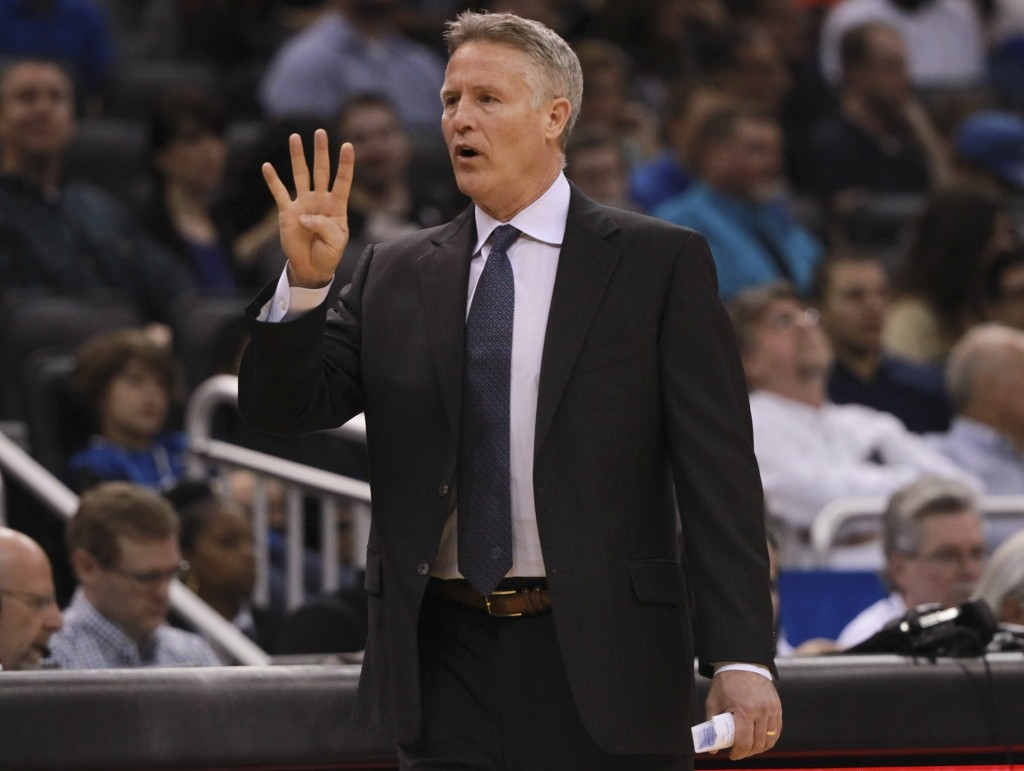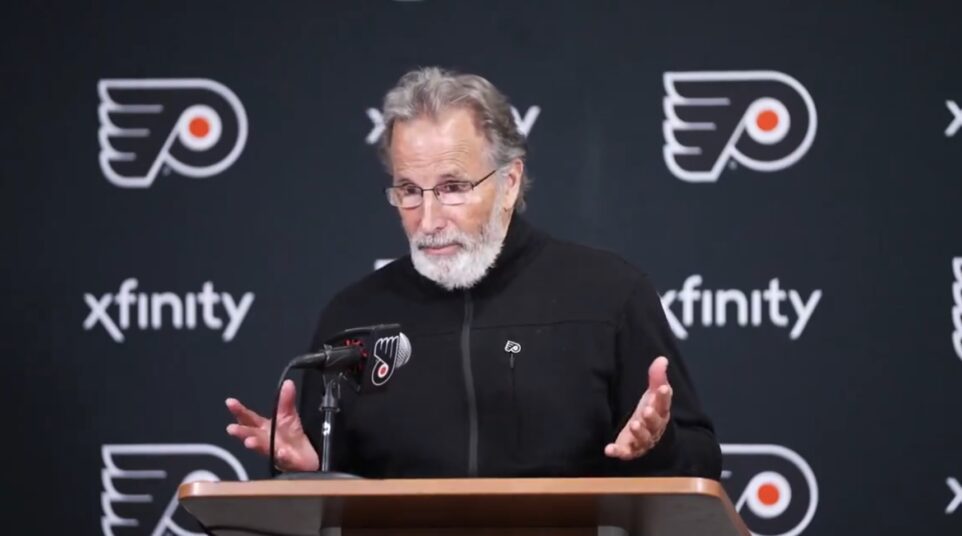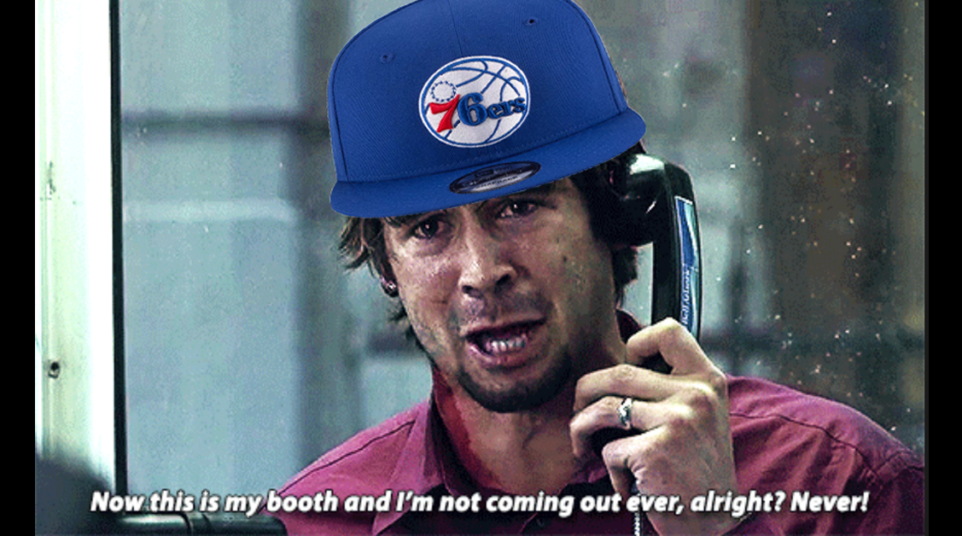Brett Brown on Trading Michael Carter-Williams, Working with Sam Hinkie, Analytics
Brett Brown joined us for a 30-minute conversation on the podcast and talked about everything ranging from tanking and analytics to his campaigning on behalf of Michael Carter-Williams. If you typically listen the show, then it goes without saying that this is a can’t-miss episode. If you’ve never checked it out, this is a good one to start with. Here are a few highlights:
On the Michael Carter-Williams trade and working with Sam Hinkie
Is there ever any pushback on your part [specifically relating to trades]?
“Of course, you always fight for stuff. Anything we ever did that mattered in San Antonio came with a fight. You know, you really had to fight for things, you had to argue for things, you had to declare why you think what you think. And it’s good, it’s healthy, it’s real. And then you walk out of a room and a decision is made and life moves on. It always comes with a fight, it always comes with conversation. And when I say it’s a fight, it’s all respectful. It’s just people voicing opinions and talking things through.”
“You know, I have a very candid relationship with our owners who have been great to me [and] with Sam, who has been a fantastic partner. And it could go to the other side, he could come in and say “You know what, let’s talk about things with defense” or offense or whatever. With things that I’m trying to do. He may say “Hey, stats or facts or analytics may challenge this, have you ever considered this?” And I’m always open to listen. Sometimes I say “Yes I have but I’m not gonna do it, I don’t believe in it,” and life moves on, and sometimes he says “What about this?” And I say “You know what, you’re right.” And it’s no differently than we talk about trades or drafts or whatever. It’s a family we’re trying to build and we’re trying to keep it real and we have some highly gifted people — studied, intelligent people — that are all around me in all shapes and forms, from sports science to people that assist Sam to people in the marketplace that scout, and you weight it all up and you make a decision and you move on. So I think that’s really what most good programs do.”
I know you’re speaking generally, but am I hearing you say you fought for Mike, or … ?
[brief silence] “Michael Carter-Williams was one of my favorite players. I loved coaching Michael Carter-Williams. And so we spoke freely about the benefits of trying to keep him and the benefits that might not come our way if we did [get rid of] him. So you step back, and I trusted Sam’s judgement that he’d done his studies and all the things that he had thought, ultimately if we did do this, were going to help the club, would play out. And so you walk out of the room and you let that situation happen.”
On using analytics
“So I take the analytics and drape them over the respective roles and I use them all over the place. I think that for me, I’m 54 years old and I’ve been around the game pretty much my whole life, I use them to help me figure out situations. They don’t influence it, they help me figure out situations and make decisions … I do use them and why wouldn’t we? That’s one of the reasons I’m here. I was really fascinated by Sam Hinkie and wondered what he knew, how could I bring it into my own coaching strategies and philosophies to make me better. You got a world of information available to you, you just gotta make sure you’re not drowned by it, or using it too much to influence everything you do.”
A specific example…
“The large part of the analytics we talk about, and I’ll strip it down to something vanilla, is you want teams to take contested long twos. When you really just strip it down and say what’s your defensive objective, you want teams to take contested long twos. You don’t want them shooting uncontested threes, you don’t want them living at a free throw line, you don’t want them living at a rim. The corner three is one of the shots that everybody talks about where, it’s really behind the layup and the free throw in relation points per possession, our most effective field goal percentage. That floor spot is very hot. It’s a very effective floor spot so you see a lot of teams defensively running people off of corners. And then you flip the switch and it’s one of those shots, offensively, that you want to get. And so the whole thing has to fit. What you coach on defense should be what you try to exploit on offense. And so the long two has become one of the easiest examples of this analytics drive where basketball fans, or like we’re doing on this interview, where you can point at something and truly explain the reason why.”
[soundcloud url=”https://api.soundcloud.com/tracks/195015489″ params=”color=00cc11&auto_play=false&hide_related=false&show_comments=true&show_user=true&show_reposts=false” width=”100%” height=”166″ iframe=”true” /]






